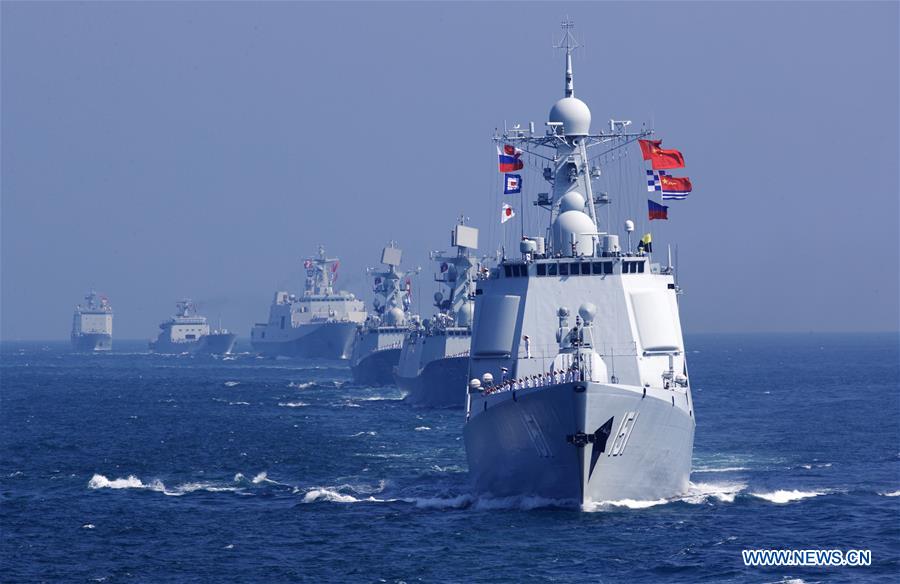


From September 12 to 19, the Chinese and Russian navies conducted their largest ever bilateral combat exercises. “Joint Sea Exercise 2016” wasn’t just noteworthy for its size, but also its location: the South China Sea. In addition to having large swathes of its waters contested by Brunei, China, Malaysia, Philippines, Taiwan, and Vietnam, the South China Sea is also a flashpoint in Sino-American relations.

Joint Sea 2016 took place during heightened tensions between China and its neighbors, as well as Russia and the NATO powers, but there is a longer history. Since 2012, China and Russia have held annual naval exercises, including in the East China Sea (2014) and Mediterranean Sea (2015).
The Russians sent five ships to the exercise: the Udaloy class destroyers Admiral Tributs “572” and Admiral Vinogradov “554”, a Ropucha landing ship, and two supply ships, along with 90 Russian Marines and two helicopters. The Chinese taskforce consisted of ten ships: the Type 052C destroyer Zhengzhou “151”, Type 052B destroyer Guangzhou “168”, three Type 054A multirole frigates, one Type 071 Landing Platform Dock Kunlunshan “998”, supply ships Type 903A Taihu “889” and Type 904B Junshanhu”961″, and two conventional submarines. China also provided 11 aircraft, eight helicopters, and a company of 160 Chinese Marines with amphibious armored vehicles.

For the eight days of the exercise, Chinese and Russian warships conducted naval gunnery, anti-submarine warfare (ASW), maritime interdiction/boarding, search and rescue and, perhaps most notably, an amphibious assault to seize a small island. Particular media emphasis was given to the amphibious assault, which featured Chinese and Russian marines storming enemy beaches with landing boats and ZDB-05 amphibious tanks, while helicopters carried air mobile Marines to encircle the enemy’s rear. Also, the Russian Udaloy destroyers, designed for ASW missions, worked alongside the Chinese Type 054A frigates to hunt the two Chinese submarines with onboard sonars and helicopters.

The perceived political value of Joint Sea 2016 was both in further solidifying growing Russian-Chinese military ties, as well as drawing Russia into a South China Sea presence, where China has been bereft of allies. However, the scope of exercises and size of the makeup of the respective task forces also demonstrates an interest by Beijing and Moscow to focus on anti-submarine warfare tactics and amphibious landings as areas for future cooperation. In particular, the continued ASW emphasis suggests that China perceives the threat by growing regional submarine fleet, and may have also viewed the exercises as a means to engage in joint training, but also learn more about Russian ASW systems as well as improved submarine technology that might be purchased. For its part, Russia has no equivalent to the Type 071 LPD and high speed ZDB-2000 amphibious fighting vehicle used by Chinese forces, which could have application in Baltic and Black Sea littoral operations.

Future international naval exercises by China could see the addition of new capabilities, like attack submarines, aircraft carriers, a multitude of unmanned systems and Type 055 destroyers.
You may also be interested in:
China and U.S. Train Together at Submarine Rescue
[Chinese and American Warships Rendezvous for RIMPAC 2016](https://www.popsci.com/chinese-and-american-warships-rendezvous-for-rimpac-2016/
Sino-Russian Naval Exercise in the Club Med
US and China Trade Naval Expertise at RIMPAC 2014 Wargames
Get to know the Chinese Warships that Just Arrived in Hawaii
